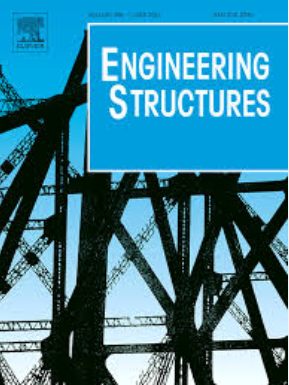Analysis of non-uniform force distribution characteristics among tendons of prestressed anchor cable and experimental study on equal stress tensioning
IF 5.6
1区 工程技术
Q1 ENGINEERING, CIVIL
引用次数: 0
Abstract
Non-uniform force distribution among the tendons of prestressed anchor cables significantly impacts the performance and reliability of anchoring systems in geotechnical engineering. This study addresses the quantification of this variability through the development and validation of a "non-uniformity coefficient (δ)" using in situ experiments on 112 anchor cables. The research establishes a novel methodological framework that combines single-tendon and whole-bundle pull-out tests to precisely measure and analyze force distribution. Through these tests, the study reveals that 61.61 % of the cables exhibit moderate to extreme non-uniformity, particularly impacting cables with fewer tendons and longer free segments. A reduction coefficient of 0.75 is proposed to account for the impact of non-uniform forces on the theoretical limit of bearing capacity. The study develops and implements innovative equal stress tensioning equipment, further investigating its effectiveness in achieving uniform force distribution across anchor cables, demonstrating significant improvements in force uniformity and reductions in prestress loss, with non-uniformity coefficients improving from 0.6 to below 0.1 and prestress losses decreasing from 25.85 % to below 11 %. The wedge push lock-off and retraction control method is also analyzed, reducing prestress loss by approximately 27.35 % in single-tendon anchors and 16.63 % in six-tendon anchors. These findings not only enhance the understanding of non-uniform force distribution in anchor cables but also contribute innovative solutions that could significantly influence the design and operational strategies of geotechnical anchoring systems, particularly in complex engineering environments.
求助全文
约1分钟内获得全文
求助全文
来源期刊

Engineering Structures
工程技术-工程:土木
CiteScore
10.20
自引率
14.50%
发文量
1385
审稿时长
67 days
期刊介绍:
Engineering Structures provides a forum for a broad blend of scientific and technical papers to reflect the evolving needs of the structural engineering and structural mechanics communities. Particularly welcome are contributions dealing with applications of structural engineering and mechanics principles in all areas of technology. The journal aspires to a broad and integrated coverage of the effects of dynamic loadings and of the modelling techniques whereby the structural response to these loadings may be computed.
The scope of Engineering Structures encompasses, but is not restricted to, the following areas: infrastructure engineering; earthquake engineering; structure-fluid-soil interaction; wind engineering; fire engineering; blast engineering; structural reliability/stability; life assessment/integrity; structural health monitoring; multi-hazard engineering; structural dynamics; optimization; expert systems; experimental modelling; performance-based design; multiscale analysis; value engineering.
Topics of interest include: tall buildings; innovative structures; environmentally responsive structures; bridges; stadiums; commercial and public buildings; transmission towers; television and telecommunication masts; foldable structures; cooling towers; plates and shells; suspension structures; protective structures; smart structures; nuclear reactors; dams; pressure vessels; pipelines; tunnels.
Engineering Structures also publishes review articles, short communications and discussions, book reviews, and a diary on international events related to any aspect of structural engineering.
 求助内容:
求助内容: 应助结果提醒方式:
应助结果提醒方式:


